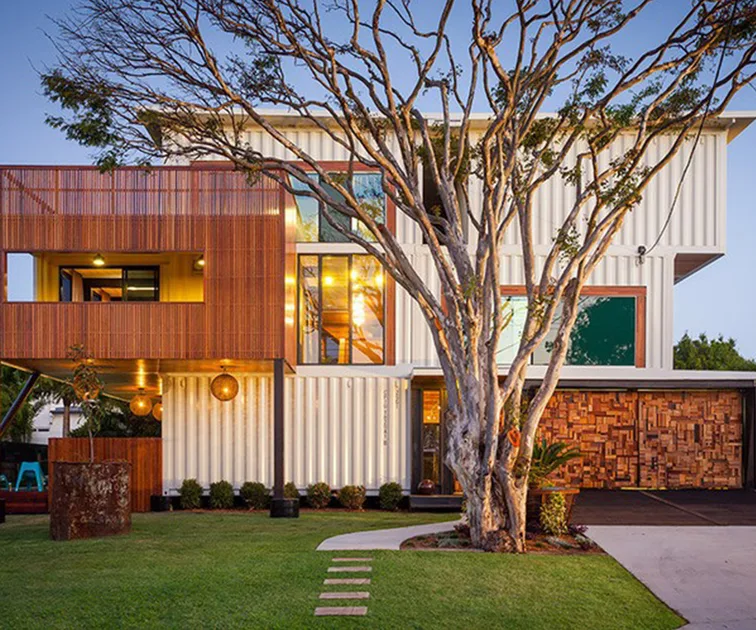The Rise of Shipping Container Homes: A Modern Housing Solution
The rising cost of traditional housing and a growing consciousness towards sustainable living have paved the way for alternative housing solutions. One such innovative option that is gaining popularity across the globe is shipping container homes. These modern dwellings are not only economical but also provide environmental advantages.
With the ability to withstand harsh weather conditions and constructed from recycled materials, shipping containers offer a durable and eco-friendly housing alternative. This trend has caught the attention of innovative architects and environmentally conscious individuals who are transforming these steel structures into beautiful and functional homes.
The Advantages of Container Homes
One of the primary benefits of container homes is their affordability. These homes can be built for a fraction of the cost of a traditional home. The base structure of steel containers makes them resistant to natural elements, ensuring longevity and minimal maintenance.
Additionally, shipping container homes offer flexibility. They can be easily transported and assembled in diverse locations, including remote areas where traditional construction would be challenging. This mobility, combined with the rapid construction process that container homes support, makes them an appealing option for many.
Environmentally, container homes contribute significantly to waste reduction. By repurposing unused shipping containers, builders are reducing the need for new construction materials, thereby conserving valuable resources and minimizing waste.
Inspirational Designs Around the World
Some innovative designs have emerged over the years, making shipping container homes an aesthetic marvel. Take, for example, the largest shipping container home in Australia, constructed with 31 containers by Ziegler Build in Brisbane. This multi-level home stands as a testament to the creative potential of container architecture.
In the United States, Studio H:T's solar-powered container home in Colorado showcases how sustainable energy solutions can be integrated into container architecture. With its timber cladding and solar panels, this house marries industrial design with environmental consciousness.
Another striking example is the award-winning home by Patrick Bradley Architects in Northern Ireland. Using four recycled containers, this home is a fine demonstration of combining minimalist aesthetics with functional design.
Case Study: The Redpath Family Home
The Redpath family's holiday house in the rural area of Gloucester, NSW, is a perfect example of container home adaptability. This architecturally striking house features a three-bedroom setup built using four containers, delivered and assembled with remarkable speed.
The home operates off-grid, employing solar power, a water tank system, and self-contained sewage, demonstrating how environmentally sustainable practices can be integrated into container home design.
Constructed by the Container Build Group, this project highlights the minimal on-site work required for container homes, with most of the transformation from cargo container to home occurring in a controlled factory environment.
Practical Considerations
While the benefits are numerous, there are practical considerations to keep in mind. It's essential to select containers that haven't been exposed to hazardous materials. Knowing the container's history is crucial to ensure a safe living environment.
Also, container homes require the same permits and inspections as traditional homes. However, they often face fewer restrictions and can be built faster due to their modular nature, offering a faster route to homeownership.
Cost can vary significantly depending on customization and location. Basic models start at a modest price, yet luxurious versions can compete with traditional home costs due to high-quality finishes and added features.
Conclusion: A Sustainable Future
The future of housing needs to address economic challenges and environmental concerns successfully. Shipping container homes offer solutions on both fronts by providing affordable and eco-friendly alternatives to traditional housing.
With the continued innovation from architects and designers, the aesthetic and functional potential of these homes have only begun to be realized. As more individuals recognize the benefits, shipping container homes may very well represent a new paradigm in sustainable living.
Ultimately, the adaptability of shipping containers presents a unique opportunity to rethink how homes are constructed, pushing the boundaries of design while supporting a more sustainable future.
